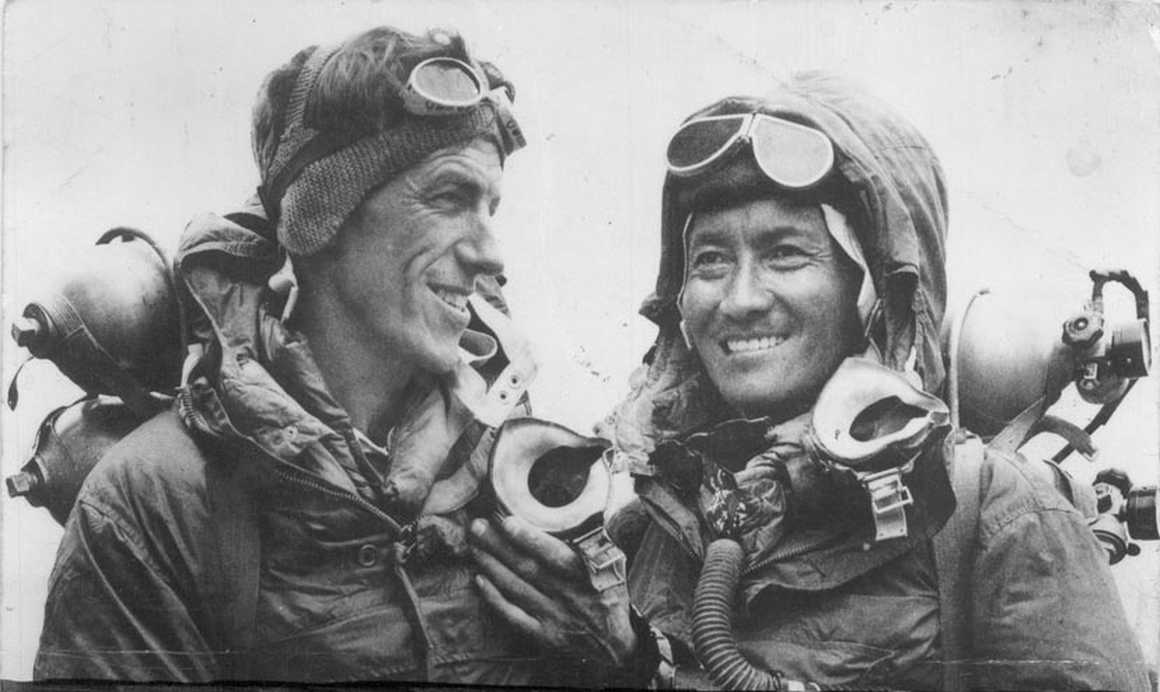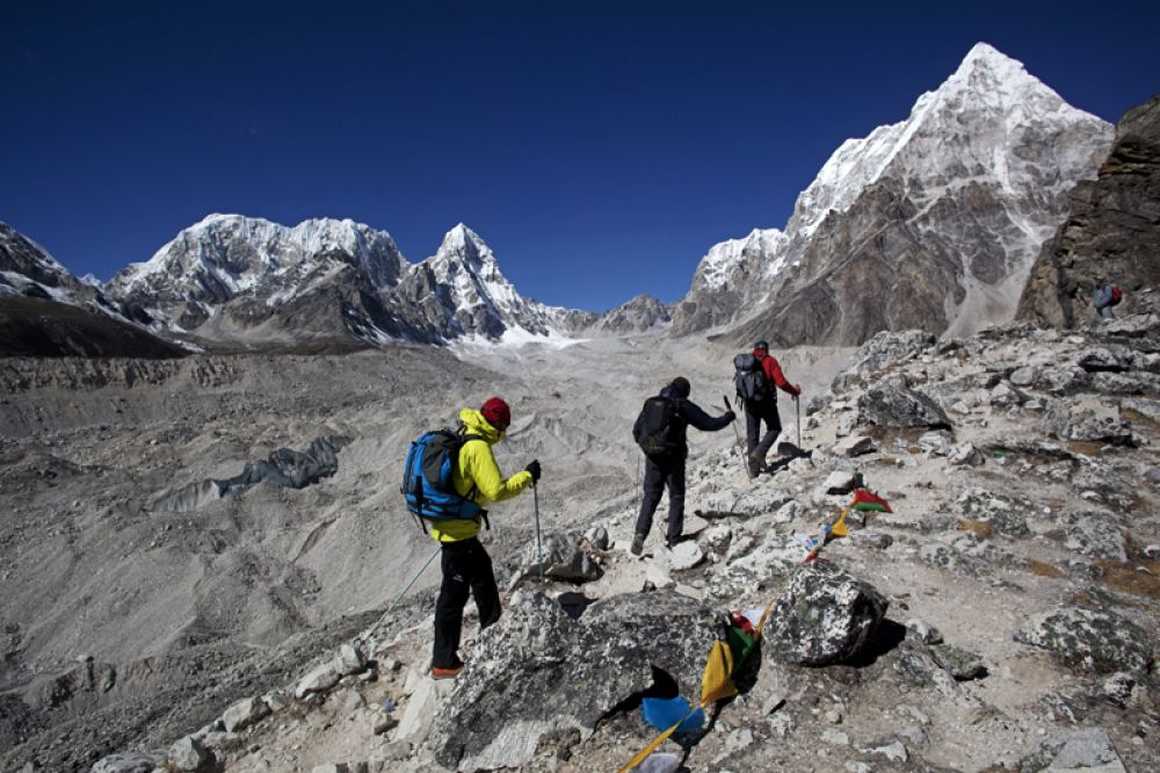Who Was the First Person to Climb Mount Everest
But who was the first person to climb Mount Everest?
About Tenzing Norgay

His childhood name was Namgyal Wangdi which he later changed
to Tenzing Norgay which means “wealthy and fortunate follower of teachings”.
His family sent him to Tengboche Monastery to make him a monk, but he left the
monastery. In his teens he fled from his home twice, the first time he ended up
in Kathmandu in Nepal and the second time in Darjeeling in India. It was here
that Norgay found a welcoming Sherpa community and developed a desire to
conquer the peaks of the Himalaya.
While most Sherpas were reluctant to scale the great peaks
of the Himalaya, except as a means of earning a living, Tenzing didn’t just
want to be a porter on Everest like most Sherpas at the time – he wanted to be
a mountaineer. At the age of 19, he had the opportunity to join the 1935
British Mount Everest reconnaissance expedition headed by Eric Shipton, an
English Himalayan mountaineer and well, the rest was history!
Climbing Mount Everest
Over the years, he took part in several more failed attempts
at climbing Everest, including one in 1947 which involved illegally entering
Tibet and being forced to turn around due to a snowstorm and another Swiss
expedition in 1952 where he and Raymond Lambert made it within 250 metres of
the summit, the highest anyone had ever been, but had to turn back due to a
shortage of equipment.
The next year, in 1953, Tenzing Norgay took park in the 9th
British Expedition to Everest led by Colonel John Hunt. Tenzing Norgay was the
leader of the team of sherpas on the expedition and it would be his 7th
summit attempt. Hunt did not reach the summit, but his planning enabled New
Zealand mountain climber and arctic explorer Edmund Hillary and Sherpa Tenzing
Norgay to successfully conquer the tallest mountain on earth for the first time
in May 1953.
After reaching the summit of Everest, Tenzing won instant
acclaim for his unprecedented achievement and quickly became a global
ambassador for the Sherpa people. While Edmund Hillary and John Hunt received
Knighthood, Tenzing Norgay only received the George medal for his contributions.
Later King Tribhuvan of Nepal presented him Order of the Star of Nepal medal,
while the Indian Government awarded him Padma Bhudsan – the third highest
civilian award in India.
Life After Everest
In 1955, Tenzing Norgay published his first autobiography
‘Tiger of the Snows” covering the first half of his life before fame with
American ghost writer mountaineering journalist James Ramsey Ullman. Norgay is
not afraid to tackle controversy and the overall picture portrays a deeply wise
man who is able to judge the needs to both his fellow Sherpas and their western
employees. ‘After Everest’ (1977), as told by Malcom Barnes, details of his
travels after the Everest ascent and his directorship of the Field Training
Himalayan Mountaineering Institute in Darjeeling.
In 1978, Tenzing Norgay founded a trekking company named Tenzing
Norgay Adventures after himself which was later run by his son Jamling Tenzing
Norgay, who himself reached the summit of Everest in 1996. Tenzing Norgay
Adventures has been a pioneer of trekking in the Himalayas for the past 40
years and the goal in founding this company was to provide fellow adventurers
with safe and extraordinary journeys to the Himalayas.
Tenzing Norgay died in Darjeeling on 9th May 1986
at the age of 71. Different sources list his cause of death as either a
cerebral haemorrhage or bronchial condition.
Climb Everest Base Camp

Mount Everest Base Camp is one of the most popular Nepal
trekking destinations with adventurers from around the world drawn in by the
thirst to follow in the footsteps of mountain legends Tenzing Norgay and Edmund
Hillary. For many, reaching the basecamp of Mount Everest, the tallest mountain
in the world, is a rite of passage and it’s appealing as the hike requires no
real mountaineering skills.
Kandoo Adventure’s trips to Everest Base Camp:
- Everest Base Camp – a classic 15-day trek to
Everest Base Camp
- Ultimate Nepal – embark on the Everest Base Camp
trek, immerse yourself in the culture of Kathmandu and look out for the elusive
Bengal tiger in the Nepalese jungle at Chitwan
- Everest Base Camp (trek only) – a 13-day trek
with the same service and guides as the classic Everest Base Camp trek but
without private airport transfers and hotels in Kathmandu
- Everest Base Camp (overnight at EBC) – a 15-day
trek to Everest Base Camp with overnight stay and walk to the foot of the
Khumbu Icefall
- Everest Base Camp and Island Peak – a
challenging 21-day trek to Everest Base Camp and climb to Island Peak
- Gokyo Lakes – a tough 18-day trek to Everest
Base Camp, climb to Gokyo Ri and crossing of the Cho La pass
- Three Passes – a challenging 21-day trek to Everest Base Camp visiting the Renjo La pass, Cho La pass and Kongma La pass










